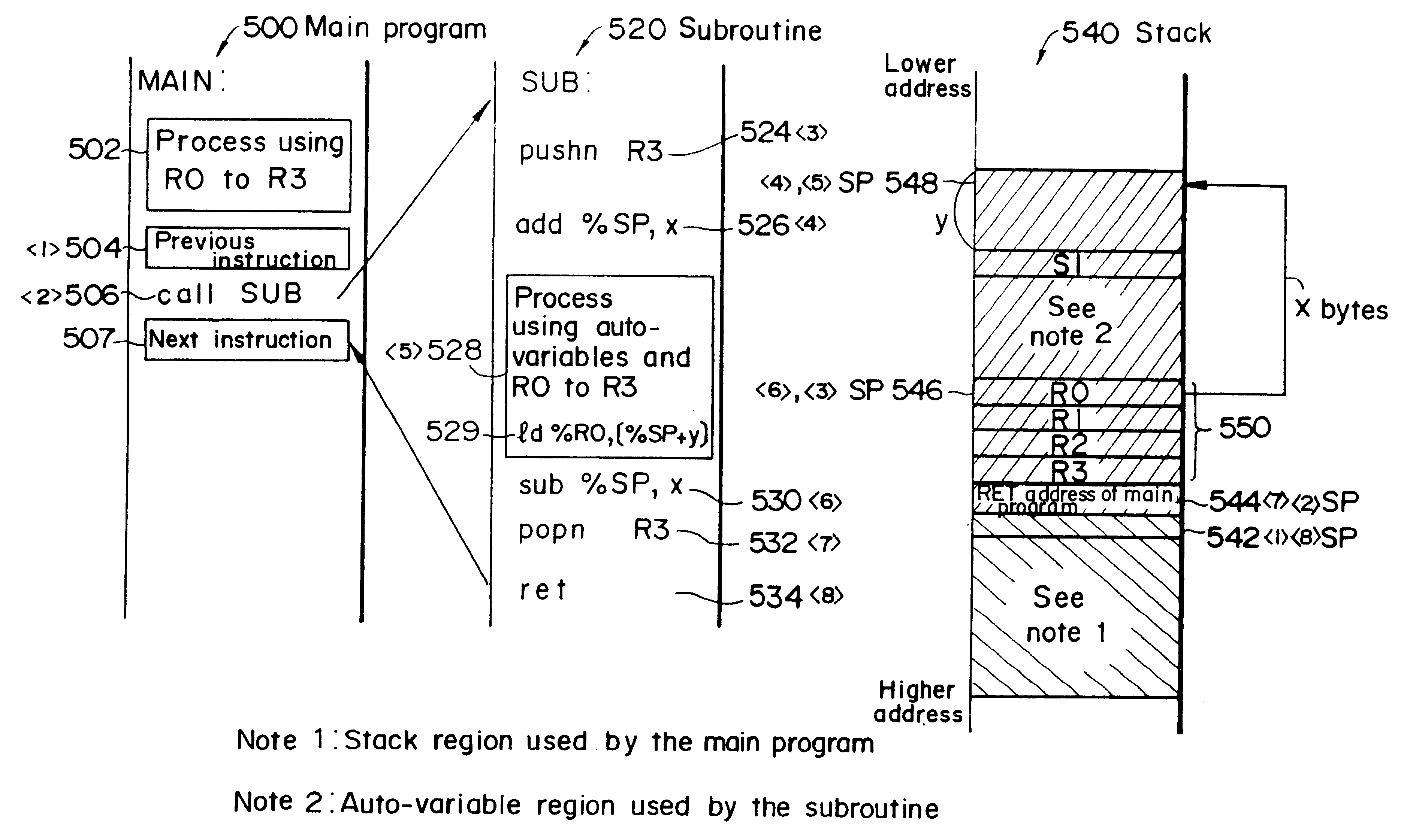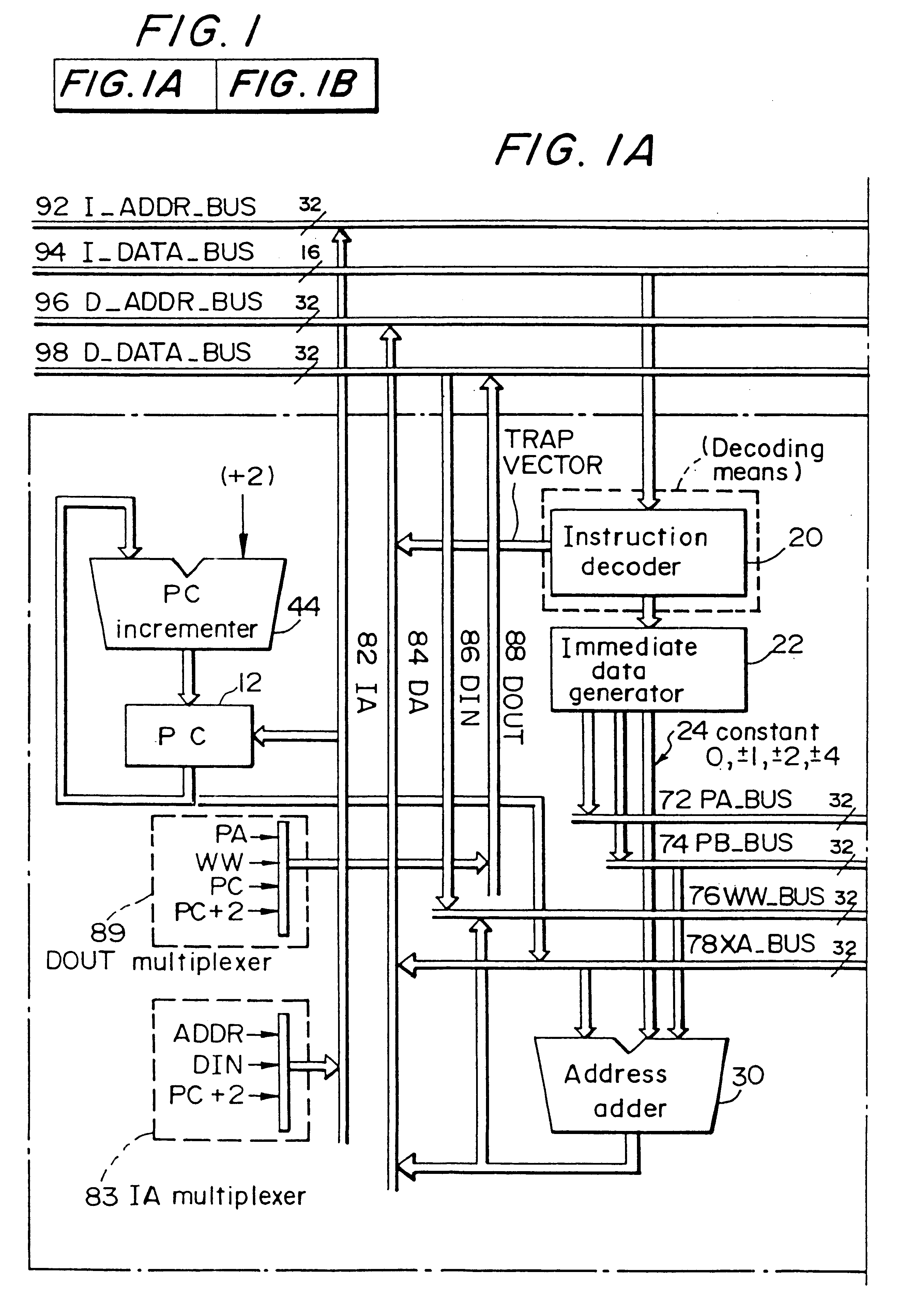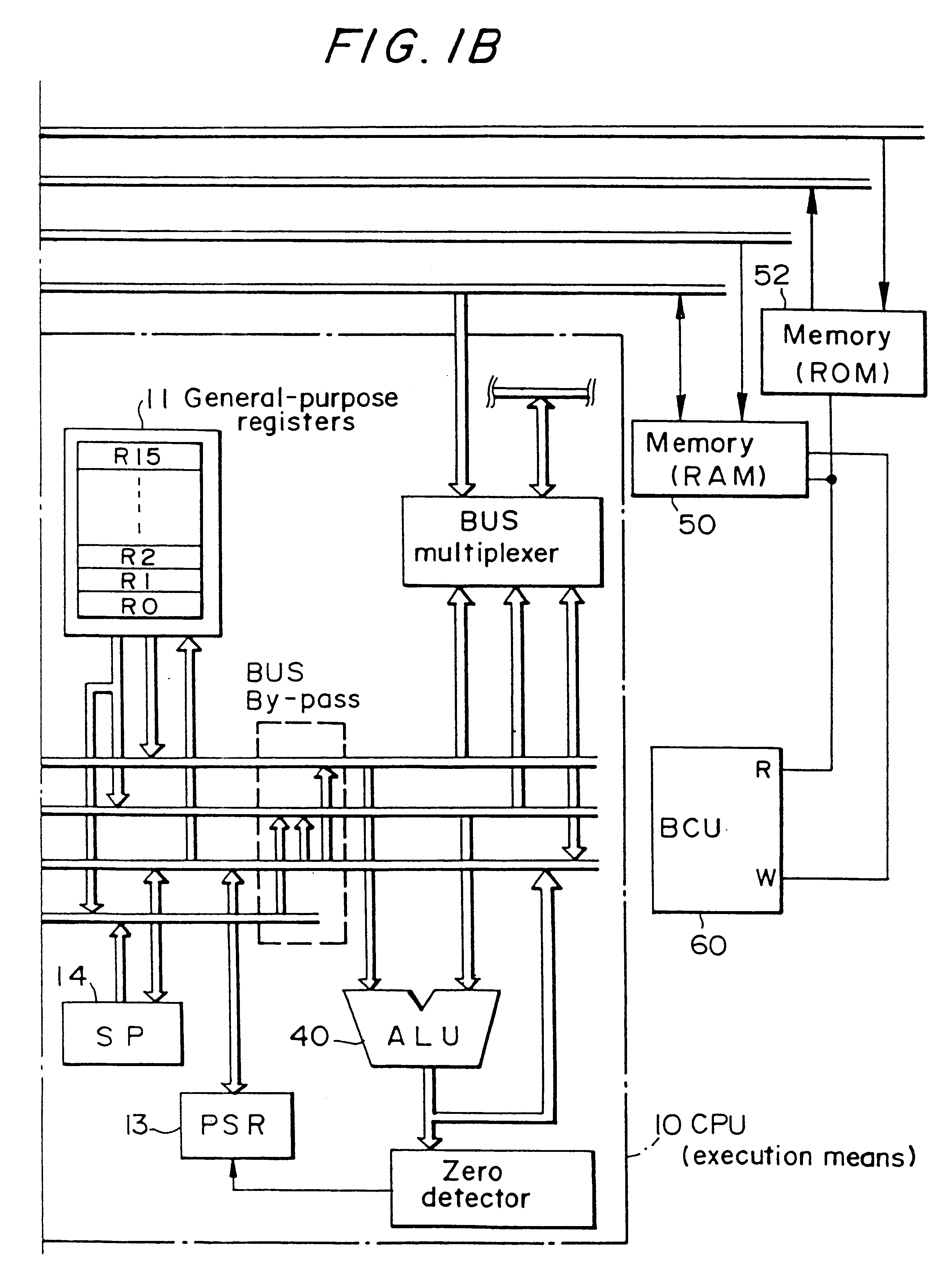Data processing circuit, microcomputer, and electronic equipment
a data processing circuit and microcomputer technology, applied in the field of data processing circuits, microcomputers, electronic equipment, can solve the problems of reducing the efficiency with which memory is used, inefficient use of memory, and difficulty in coding instruction details within a 16-bit fixed-length
- Summary
- Abstract
- Description
- Claims
- Application Information
AI Technical Summary
Benefits of technology
Problems solved by technology
Method used
Image
Examples
embodiment 1
(1) Configuration of the CPU of this Embodiment
The CPU of this embodiment executes virtually all of its instructions within one cycle, thanks to its pipeline and load / store architecture. All of the instructions are expressed as 16-bit fixed-length instructions, so that instructions processed by the CPU of this embodiment are implemented within compact object code.
In particular, this CPU is configured in such a manner that it has a dedicated stack pointer register to enable the efficient coding and execution of processes that act upon the stack pointer. It also enables the decoding and execution of an instruction set of a group of dedicated stack pointer instructions that have object code specifying that dedicated stack pointer register as an implicit operand.
A schematic view of the circuit structure of the CPU of this embodiment is shown in FIG. 1 by way of illustration.
This CPU 10 comprises a register set that includes general-purpose registers 11, a PC register 12 for holding the ...
embodiment 2
A block diagram of the hardware of a microcomputer in accordance with this embodiment is shown in FIG. 23.
This microcomputer 2 is a 32-bit microcontroller that comprises a CPU 10; ROM 52; RAM 50; a high-frequency oscillation circuit 910; a low-frequency oscillation circuit 920; a reset circuit 930; a prescaler 940; a 15-bit programmable timer 950; a 8-bit programmable timer 960; a clock timer 970; an intelligent DMA 980; a high-speed DMA 990; an interrupt controller 800; a serial interface 810; a bus control unit (BCU) 60; an A / D converter 830; a D / A converter 840: an input port 850; an output port 860; and an I / O port 870; as well as various buses 92, 94, 96, and 98 that are connected to these components and various pins 890.
The CPU 10 has an SP that is a dedicated stack pointer register, and it decodes and executes the dedicated stack pointer instructions as described above. This CPU 10 has the same configuration as that of the previously described Embodiment 1 and it functions as...
PUM
 Login to View More
Login to View More Abstract
Description
Claims
Application Information
 Login to View More
Login to View More - R&D
- Intellectual Property
- Life Sciences
- Materials
- Tech Scout
- Unparalleled Data Quality
- Higher Quality Content
- 60% Fewer Hallucinations
Browse by: Latest US Patents, China's latest patents, Technical Efficacy Thesaurus, Application Domain, Technology Topic, Popular Technical Reports.
© 2025 PatSnap. All rights reserved.Legal|Privacy policy|Modern Slavery Act Transparency Statement|Sitemap|About US| Contact US: help@patsnap.com



